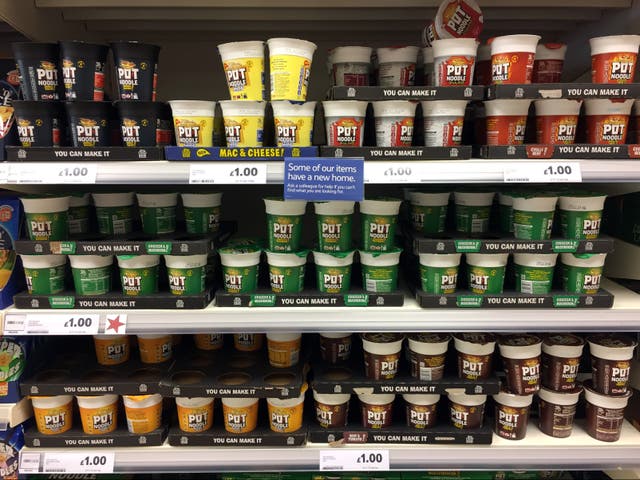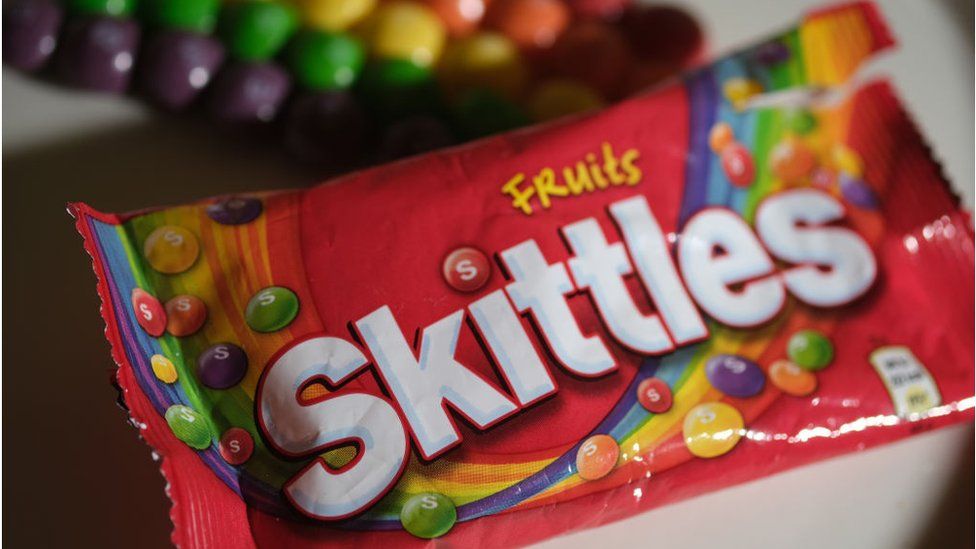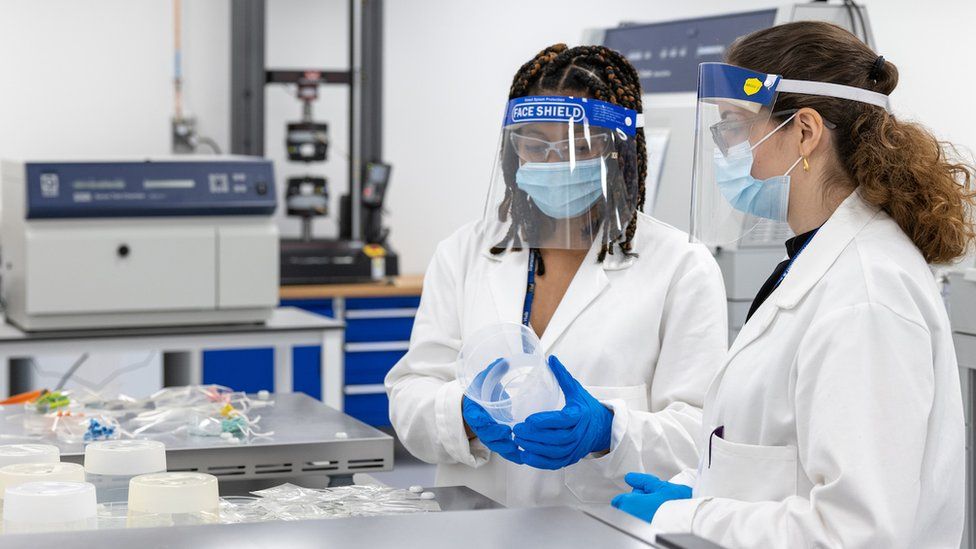
One of the world’s biggest food and consumer goods companies is set to introduce carbon footprint labels on its products for the first time by the end of the year – marking a key moment in the shift to badge products with their cost to the planet, The Independent reveals today.
Unilever, which has 75,000 products including Magnum ice-cream, Pot Noodle, Marmite and Hellmann’s mayonnaise, said that the carbon footprint of 30,000 of these products would be measured within six months, with carbon footprint labels on a select range by the end of 2021.
The labels will be piloted on up to two dozen products in Europe or North America and could adorn packaging in UK supermarkets by the end of 2022. Unilever said it plans to badge its entire product range over the next two to five years and also floated the idea of supermarkets creating “carbon-neutral or carbon-friendly” aisles, just like they have ”vegetarian aisles”, to help consumers make greener choices.
It is the first move by a global player to introduce carbon footprint labelling and could shake up supply chains in the food and drinks industry, causing other companies to fall in line or accelerate their plans. It comes as Boris Johnson’s food tsar, Henry Dimbleby, recommended a move towards consistent labelling that shows the environmental impact of products. The National Food Strategy, released on Thursday, said the Food Standards Agency should work with government and industry bodies to “develop a harmonised and consistent food-labelling system”.
It said: “Creating a simple and consistent method of labelling would ensure that all shops and manufacturers give us the same kind of information about our food. Having to record information about the environmental impact of food production could also influence the way that manufacturers make their products.”
Last month, Marks & Spencer and Costa Coffee agreed to pilot an “eco-score traffic light-style” label on select own-brand products from September. The label, developed by scientists at the University of Oxford and launched by the non-profit group Foundation Earth, will be graded into tiers marked A to G and colour-coded – green for the most environmentally friendly and red the least. It will involve 13 brands, including meat brand Naked, and they hope to follow up the pilot by expanding into Europe next year.
Previously carbon footprint labels have been used only by plant-based companies, such as Quorn Foods and Oatly.
Marc Engel, Unilever’s global head of supply chain, said: “We are halfway to ‘knowing’ what the carbon footprint of our product range is and we think now is the moment to begin ‘showing’. Our market research shows that younger consumers especially are very impacted by climate change and are keen to use their buying behaviour to send a message. We intend to roll out carbon labels on our entire product range over the next two to five years and believe it will transform not only the actions of consumers, but of the thousands of businesses in our supply chain as well.”
Unilever’s move was welcomed by the government as well as early adopters. A spokesperson for the Department for Environment, Food and Rural Affairs said: “We support Unilever’s ambitions to include carbon labelling on its products to help consumers in the fight against climate change.”

Sam Blunt, global marketing operations director for Quorn Foods, said the announcement of labels by the end of 2021 was “exciting”, adding: “A business of that size could really drive things forward and make a big difference, especially if they quickly roll out the labelling across their whole product portfolio.”
With about a third of the world’s greenhouse gas emissions coming from the food industry, according to the United Nations, carbon footprint labels serve as a quick way for consumers to evaluate the climate impact of a product. Measured as a carbon dioxide equivalent (CO2e) value, it shows the environmental cost from farm to fork, taking into account fertiliser use, energy needs, transport, processing, refrigeration and packaging.
But arguments as to what data to include in the label – as well as underlying concerns as to how accurate that data is – still divide opinion behind the scenes.
The British Retail Consortium, the trade body representing UK retailers, warned that “capturing all the data to generate an accurate and scientifically trustworthy label is complex – and we are not there yet across the full spectrum of retail products”.
Its head of sustainability, Peter Andrews, said: “Take a simple product like blueberries. The carbon impact fluctuates according to whether they are ripened indoors or in a field, which is itself a factor of the weather, which cannot be predicted. A lot of data still needs to be captured before consumers can hold up two bags of rice or two brands of beef burgers and make a robust choice between them based on carbon labels.
“We think carbon labels will play an important role in helping everyone live lower carbon lifestyles, but trust in a label is essential and that means the data supporting it needs to be robust.”
The label itself is contentious and different forms have been floated: either an exact footprint measure stated as a CO2e value – though critics say this could be hard for the public to grasp – or a simpler traffic-light system. The further question – as to whether the label should calculate only carbon emissions or take in wider environmental issues such as biodiversity and water usage – also divides the room. Andrews said: “A single, universal approach to labelling is critical to enabling the public to compare products across different brands. A proliferation of labels would not be helpful.”
But Unilever’s Engel said: “We believe speed is important to generate momentum and we intend to build accuracy along the way. For the data, we will use a combination of industrial averages taken from approved databases together with actual carbon measures where we have them, such as with our Ben & Jerry’s range. We think our labels will be around 85 per cent accurate. Ideally we want a world where a carbon footprint is as simple to measure as a calorie count, but it took 30 years to standardise calories and we don’t have 30 years to standardise carbon labels.”
Unilever is “spending millions on focus groups and consumer feedback” before settling on what form its labels will take. “We’re considering a traffic-light system supplemented by more precise data on the website, but we are still working through the options because it has to make sense to the consumers,” said Engel.
In contrast, food giant Nestle, which has over 2,000 brands in 186 countries, said that to focus exclusively on carbon emissions would be a mistake. Emma Keller, head of sustainability, said: “We shouldn’t only use labels to drive down carbon emissions and forget about biodiversity and animal welfare. It’s in all our interests to have an industry-wide, harmonised approach to labelling that is led by the science and adopted across Europe. We think scientifically robust composite labels will emerge over the coming years and that the Cop26 climate summit in November will accelerate the debate, but that we shouldn’t rush into it. For it to be effective in reducing emissions and providing transparency and agency to consumers, nobody should do this alone or strike out with their own method. Collaboration is essential.”
Defra, criticised by some in the industry for sitting on its hands, told The Independent that it hoped to use its Environment Bill “to seek powers to ensure information about environmental impacts, such as carbon emissions, is provided with certain products” – but gave no timeline for doing so or sense of how such powers might work. Defra added that “the need to regulate will be reduced in those sectors where industry is already taking action”.
Luke Pollard, shadow environment, food and rural affairs secretary, said: “In the middle of a climate and nature emergency, people want to do what they can to help the environment, but at the moment they don’t have the information to make more sustainable buying choices. Labour would show leadership with clearer labelling on carbon and environmental credentials, so people can back the brands and products doing the right thing by our planet.”
Engel said: “We have to accept that governments and regulators are going to be late to the party and take action ourselves.”
Food companies agree that winning over the public is critical if this is not to end in the same way as Tesco’s botched attempt at carbon labelling in 2011. A Tesco spokesperson said: “We trialled carbon footprint labelling and abandoned it after finding they did not influence customer purchasing decisions and that the labels were hard to understand. We learned that we cannot affect transformational change alone and have called for collective action across the food industry.”
Today, a decade later and with climate change rising sharply up the public’s agenda, consumers appear hungry for information. A 2020 survey by the Carbon Trust, which launched one of the world’s first carbon footprint certification schemes, showed that almost two-thirds of adults in the UK support carbon labels with around 80 per cent backing them in France, Italy and Spain. A recent EU study reported that 57 per cent of consumers in the bloc were receptive to environmental claims when making purchase decisions.
Engel said: “Everybody is aligned on the urgency of this as well as the need for collaboration. Our view is the more pilots the better. At the end of the day, we’d have no problem adjusting our label to fall in line with others if it’s for the common good. We’re not trying to be competitive. We win and lose together when it comes to climate change. We agree with Nestle that we need to work together to make this happen, but we need to start now. In the debate between speed and perfection, we are opting for speed and will refine as we go.”
Source Independent




